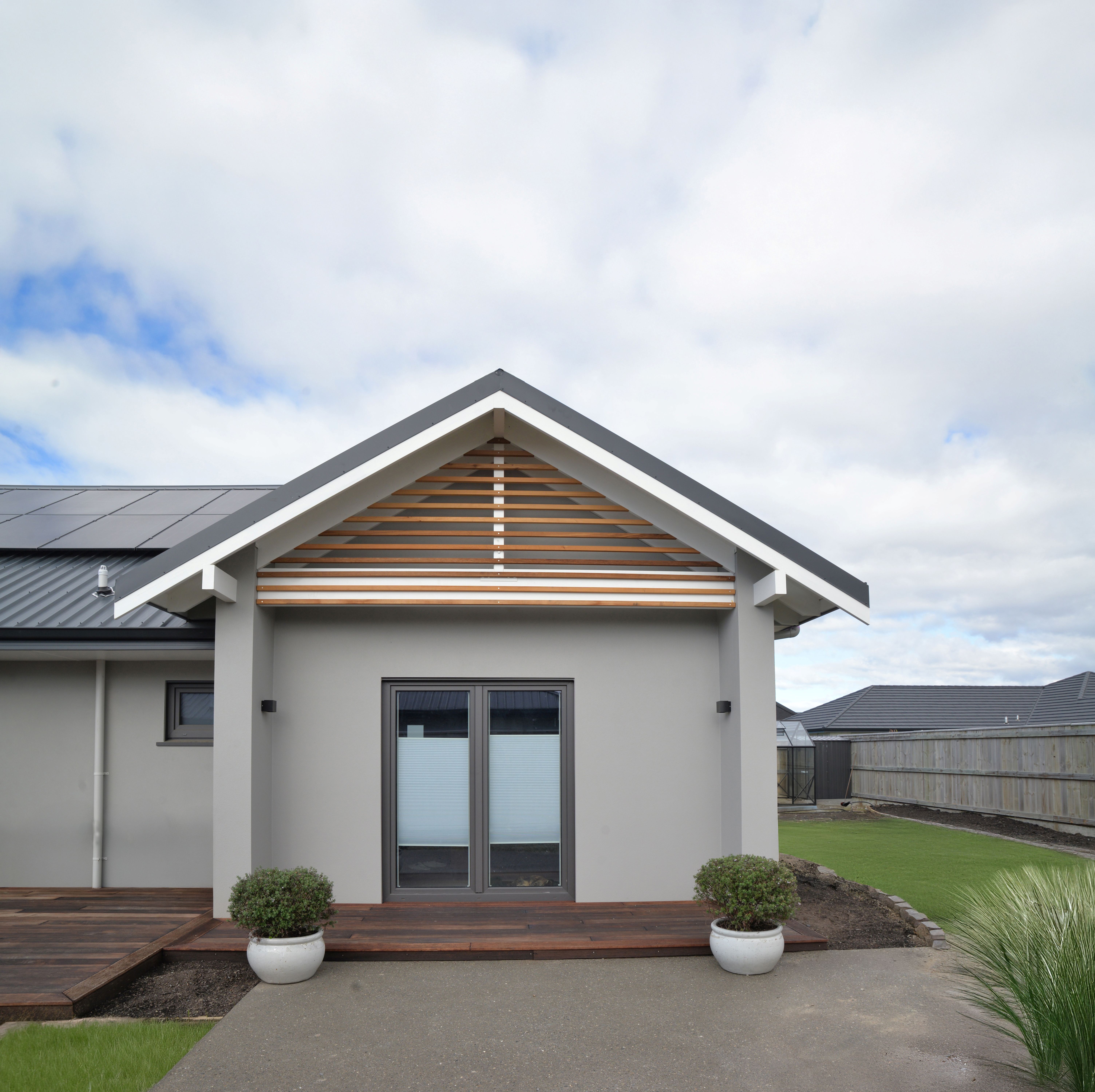Property Showcase: Built for comfort

After years of building experience across New Zealand and the Pacific, Micky Dean has brought his commitment to sustainable, high-performance homes to Marlborough with the region’s first Certified eHaus Passive House.
Words: Adrienne Matthews | Photos: Summa Bruning + Lisa Duncan
Builder Micky Dean has had a keen interest in passive design house building since the early days of his career as a carpenter serving in the New Zealand Defence Force.
“I had the opportunity to build in less developed countries in many other parts of the world and began to understand the great value to be gained in creating sustainable, passive housing,” he says.

Since becoming a Licensed Building Practitioner in 2009, Micky has project managed multiple projects both in New Zealand and the Pacific, such as school rebuild projects in the Solomon Islands, health centres in Kiribati, building upgrades in East Timor, along with residential and commercial projects throughout New Zealand.
His experiences have led him to believe that passive housing is an environmentally friendly and sustainable option for people who also want to feel bathed in comfort in their homes.
Micky and his team from Dean Building and Renovations Ltd have just completed Marlborough’s first Certified eHaus Passive House. Micky and his wife Tash were attracted to the eHaus system and joined as a licensee for the Marlborough region.
Designers and builders of New Zealand’s healthiest, comfiest, highest performing homes, eHaus homes set a new standard for high-performance living, tailored specifically for New Zealand’s climates. With energy-saving design reducing heating and cooling energy by up to 96%, eHaus Euro and eHaus Pacific provide healthier, more comfortable environments – because in an eHaus, you can live better, save energy, and reduce your carbon footprint.

The new owners knew that they wanted an alternative to the 1920s bungalow they had lived in previously. Although it had been substantially retrofitted, with insulation added where possible and double glazing installed, it was never warm enough in winter and draughts persisted.
Visiting a passive home in Wellington, they were impressed with the owner’s account of the comfort of living in a house where the indoor temperature remains consistent despite the season or weather.
As well as deciding that they wanted their new build to fully meet all the eHaus Passive House standard accreditation requirements, they also wanted it to incorporate the Lifemark Design Standard, which has features like electrical plugs that are more easily reachable as people age or have a disability, and the likes of wider halls and doorways.

Once the initial house design was completed, Damien McGill of the Healthy Home Cooperation and Canterbury Chapter Lead for The Passive House Institute of New Zealand (PHINZ), was called in to undertake a Geotech assessment of the site and plan the engineering components of the build that would be needed to reach the eHaus Passive House standard.
The five internationally accepted principles, combined with energy modelling, that have been established for homes worldwide to meet the eHaus Passive House standard, have all been incorporated into this home.

The walls have 140mm timber framing as opposed to the minimum New Zealand standard of 90mm, allowing for a much higher degree of insulation, with the ceilings and floors also heavily insulated. There is a secondary cavity in the walls and ceilings which contains the service elements like electrical wires and plumbing, and these too are thoroughly insulated. This helps prevent additional heat loss in winter and keeps the home cooler in summer.

Setting the true passive home apart takes more elements, the most vital being the correctly fitted air-tight membrane that is stretched over the ceiling, down the external walls and fitted to the floor so that there are no air leaks anywhere. The high-performance, triple-glazed PVC tilt-and-turn windows have been imported from Germany and are carefully designed to prevent air leakage. They can of course be opened but, when closed again, the house returns to a comfortable 20 to 25 degrees, which is the year-round standard thanks to all the eHaus Passive House elements working together.

A heat-recovery system and ventilation plan was designed by Fantech, with a high-quality Zehnder system installed. “Every house requires its own specific design,” Damien explains. “Stale air is extracted and the heat recovered from it. Filtered, fresh air is then supplied while minimising the loss of energy. This leads to exceptionally low power bills, and the house is kept at an even temperature with lower humidity. As a bonus, the lack of pollen and dust within the house will reduce allergies and alleviate asthma symptoms.”
The owners are thrilled with the result. “It’s so good being able to wear light clothing inside all year round and never feel the cold thanks to the consistent temperature and dry air,” they say.

“Before an eHaus Passive House can receive its official plaque from the eHaus Passive House Institute, rigorous tests must be carried out for air-tightness and energy performance,” explains Micky. “The result here well and truly exceeded the requirements to achieve the certification. It was a very exciting day.”
The only ongoing maintenance required is the changing of the filters, and since the ventilation system has its own cupboard, this is super easy – unlike systems that are installed in roof cavities.
“It is great to be a part of this type of construction, which brings a whole other level of comfort to people’s lives,” says Micky. The owners certainly agree.
